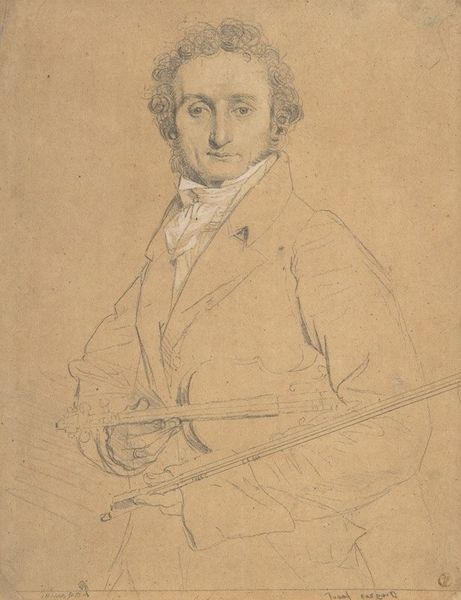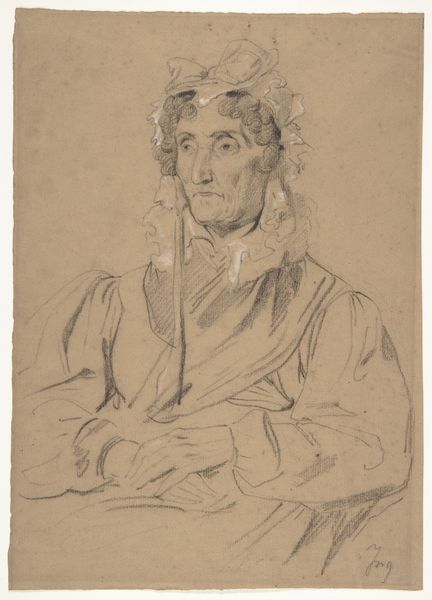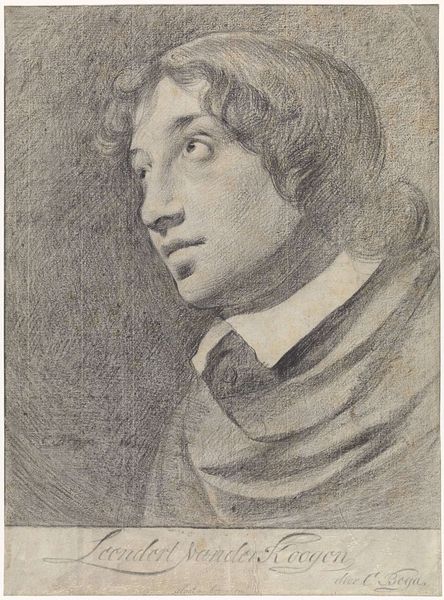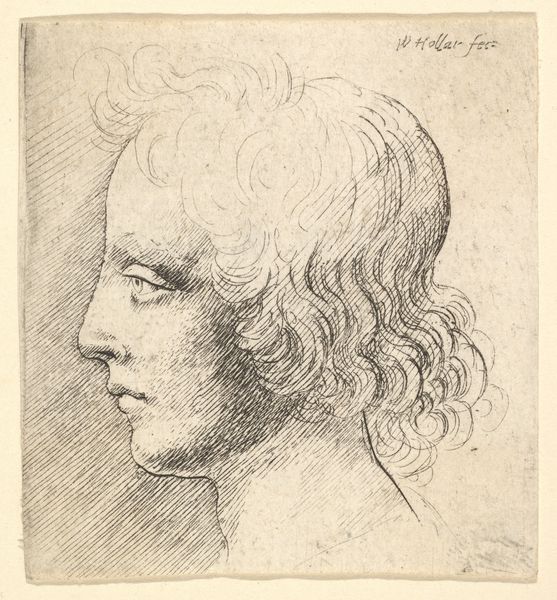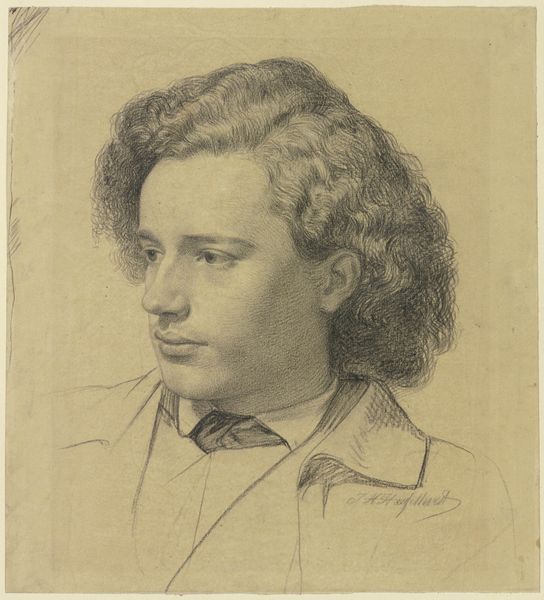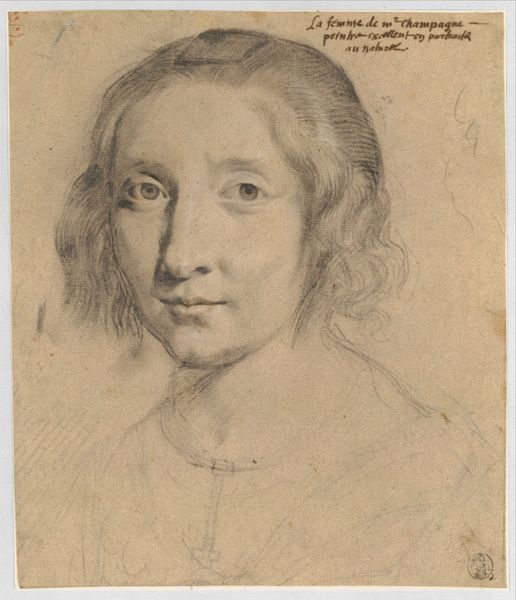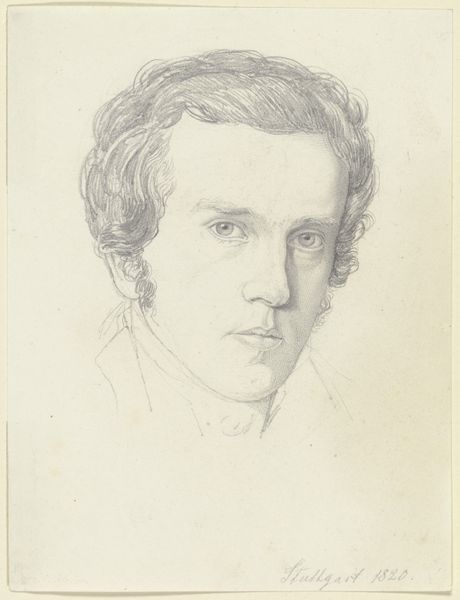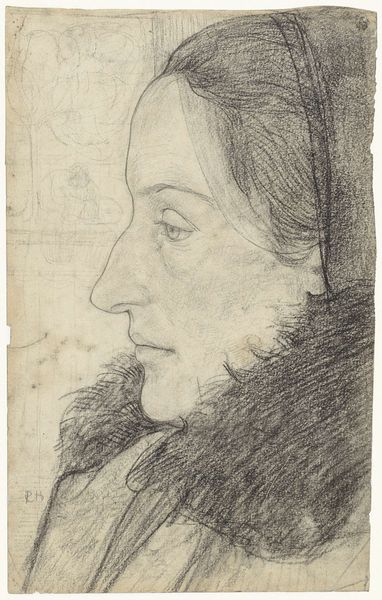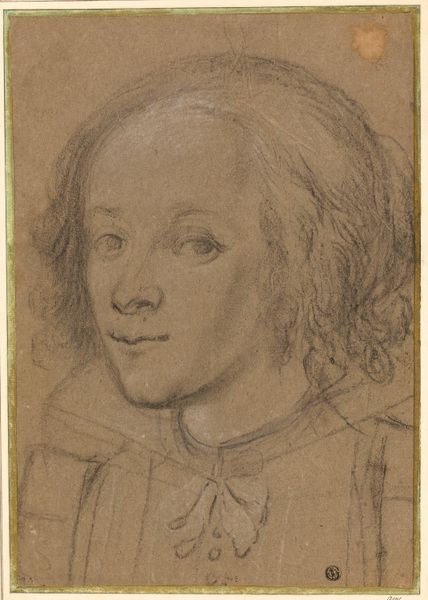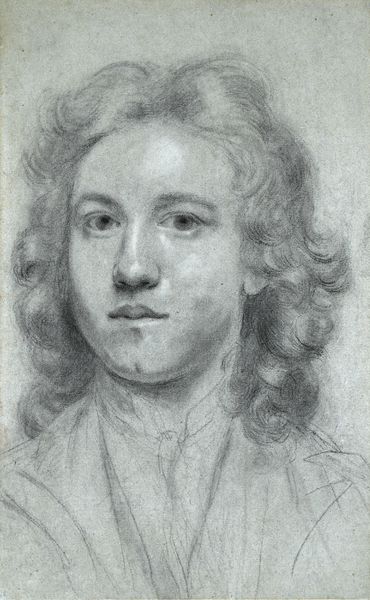
drawing, print, paper, chalk, charcoal
#
portrait
#
drawing
# print
#
charcoal drawing
#
paper
#
portrait reference
#
pencil drawing
#
chalk
#
portrait drawing
#
charcoal
Dimensions: 228 × 184 mm
Copyright: Public Domain
Curator: Here we have an exquisite drawing attributed to Anthony van Dyck, one of the leading painters of the Baroque era. Undated, this piece currently resides here at the Art Institute of Chicago. Editor: The immediate impression is one of quiet intensity, wouldn't you say? The soft rendering almost mutes the subject, giving him an introspective air. It's surprisingly modern in its feel, even though the costuming places it historically. Curator: It’s rendered in black chalk, heightened with touches of white chalk, on paper, techniques common for studies and preparatory drawings. Notice the delicate hatching, particularly around the eyes and mouth; it's very effective in suggesting form and depth. This leads us to ponder on Van Dyck's artistic process: was it a preliminary sketch for a larger portrait, a study of light and shadow, or a piece of its own merit? Editor: And who was this man? Knowing the social context of portraiture is crucial: who could afford to be immortalized, and what power dynamics were at play between artist and sitter? He certainly embodies a certain kind of cultivated masculinity... I’d wager someone within the upper classes, who profited from both art and commerce. Curator: Absolutely, accessing the kind of artisanal craftsmanship represented by the materials and hours required, that also speaks to both class status and cultural values of the period. Chalk wasn't necessarily an expensive material, but the skill evident here speaks to intense labor, an apprenticeship and patronage systems which produced art, as well as reinforcing a social hierarchy. Editor: Also, this piece raises important questions about access and representation. Were subjects of color or working class people afforded such treatment, let alone the creation and preservation of their image in major museums? Whose stories were excluded from the official historical narrative and art canon, is important to remember. Curator: That’s a great point, one can assess how different materials allow an artist to explore tonal range and texture and consider those same works within historical context, and that’s crucial, absolutely. What looks delicate and spontaneous might actually result of hours of strategic labor within an inflexible and very unequal cultural industry. Editor: Exactly. The seeming fragility of this piece mirrors larger issues. The art world can be complicit and make claims on “universality” when perpetuating unequal systems. By remembering who is visible—and who is not—we might consider issues of value in relation to labor. Curator: Thanks to a combination of skill and a close eye for the materials Van Dyck elevated the status of drawing; he didn't see it as just mere preliminary work. The final marks on the drawing remind us that even ephemeral materials bear significance once mediated through creative touch and contextual practice. Editor: This is where understanding our collection policies allows us to consider what should or should not be acquired based on access and provenance. This drawing is now a means to critically re-evaluate histories of portraiture within the power and possibilities inherent to this medium, reminding us of whose gaze is privileged within culture.
Comments
No comments
Be the first to comment and join the conversation on the ultimate creative platform.
